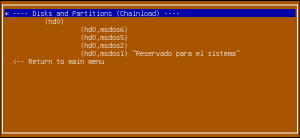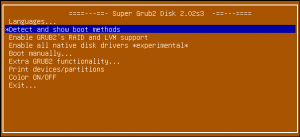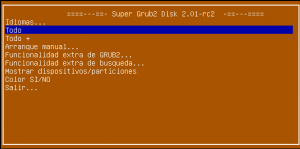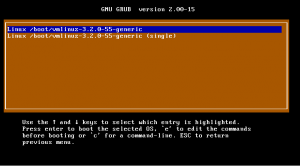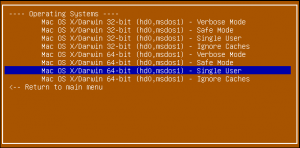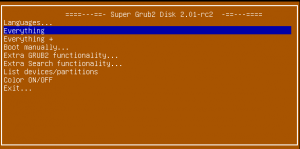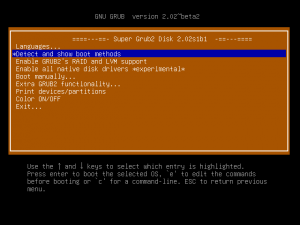Rescatux 0.40 beta 1 has been released.
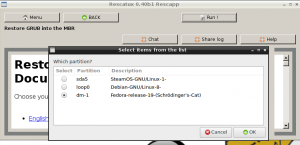
Downloads:
Rescatux 0.40b1 size is about 596 Megabytes.
Some thoughts:
Now Rescatux is based on Debian Jessie (Latest Debian stable release)!
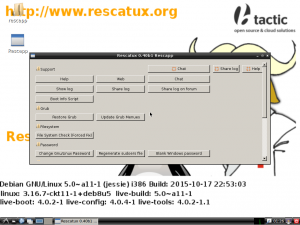
The great new feature in this release is the SELinux support. SELinux support is used by the Fedora, Red Hat Enterprise Linux (RHEL), CentOS alike distributions. It’s not so much about adding SELinux related features which might be implemented in a far future. It’s about being able to interact with SELinux based system without damaging original contexts (contexts like additional permissions in SELinux).
Currently if you wanted to use the change password option on these systems then the system did not let you login (even if you know a password from a user different from the one its password you had changed) because these wrong contexts.
Now it should work flawlessly but please give us feedback here on the comments or in the mailing list. Anything about you detecting that Rescatux is not using the correct contexts for your files is welcomed.
It’s also welcomed feedback from people who uses non standard policy types such as the military ones. Given the nature of these systems try the options in non production machines of course.
This new beta release loses the long awaited feature about being able to select your own language, country and keyboard. The reason is that Rescatux 0.40 is based on jessie. These means that I have to use tails-greeter from Jessie and not Wheezy. The other problem on tails-greeter is that I need to hack it (this time properly thanks to the insights I have been given in Debconf 15 from Tails people) in order to fit my needs.
Finally don’t expect any new release in the next months. I am too busy. Anyway once I’ll start not being busy I will be able to speed a lot because the SELinux support improvement was very difficult to implement.
Many options have not been tested after having based Rescatux on jessie. So please use the Rescatux 0.32 beta 3 as if it was an stable release and this one as if it was a beta one. Use Rescatux 0.40 beta 1 if you have a SELinux based system of course.
In case you were asking yourself I add 0.1 to the Rescatux version either when the Rescapp program has been improved a lot or when the Debian OS has been updated to a new stable release. The latter is the reason why we jump from 0.3X to 0.4X suddenly.
I almost forgot. Thank you very much to the #fedora-devel and #selinux who helped so much on bringing SELinux support to Debian Live.
Roadmap for Rescatux 0.40 stable release:
You can check the complete changelog with link to each one of the issues at: Rescatux 0.32-freeze roadmap which I’ll be reusing for Rescatux 0.40 stable release.
- [#1323] GPT support
- [#1364] Review Copyright notice
- (Fixed in: 0.32b2) [#2188] install-mbr : Windows 7 seems not to be fixed with it
- (Fixed in: 0.32b2) [#2190] debian-live. Include cpu detection and loopback cfg patches
- (Reopened in: 0.40b1) [#2191] Change Keyboard layout
- [#2192] UEFI boot support
- (Fixed in: 0.32b2) [#2193] bootinfoscript: Use it as a package
- (Fixed in: 0.32b2) [#2199] Btrfs support
- [#2205] Handle different default sh script
- [#2216] Verify separated /usr support
- (Fixed in: 0.32b2) [#2217] chown root root on sudoers
- [#2220] Make sure all the source code is available
- (Fixed in: 0.32b2) [#2221] Detect SAM file algorithm fails with directories which have spaces on them
- (Fixed in: 0.32b2) [#2227] Use chntpw 1.0-1 from Jessie
- (Fixed in 0.40b1) [#2231] SElinux support on chroot options
- [#2233] Disable USB automount
- [#2236] chntpw based options need to be rewritten for reusing code
- [#2239]https://www.supergrubdisk.org/wizard-step-put-rescatux-into-a-media/suppose that the image is based on Super Grub2 Disk version and not Isolinux.The step about extracting iso inside an iso would not be longer needed.”>Update doc: Put Rescatux into a media for Isolinux based cd
- (Fixed in: 0.32b2) [#2259] Update bootinfoscript to the latest GIT version
- [#2264] chntpw – Save prior registry files
- [#2234] New option: Easy Grub fix
- [#2235] New option: Easy Windows Admin
Fixed bugs (0.40b1):
- (Fixed in 0.40b1) [#2231] SElinux support on chroot options
Reopened bugs (0.40b1):
- (Reopened in 0.40b1) [#2191] Change Keyboard layout
Fixed bugs (0.32b3):
- (Fixed in 0.32b3) [#2191] Change Keyboard layout
Other fixed bugs (0.32b2):
- Rescatux logo is not shown at boot
- Boot entries are named “Live xxxx” instead of “Rescatux xxxx”
Fixed bugs (0.32b1):
- Networking detection improved (fallback to network-manager-gnome)
- Bottom bar does not have a shorcut to a file manager as it’s a common practice in modern desktops. Fixed when falling back to LXDE.
- Double-clicking on directories on desktop opens Iceweasel (Firefox fork) instead of a file manager. Fixed when falling back to LXDE.
Improvements (0.32b1):
- Super Grub2 Disk is no longer included. That makes easier to put the ISO to USB devices thanks to standard multiboot tools which support Debian Live cds.
- Rescapp UI has been redesigned
- Every option is at hand at the first screen.
- Rescapp options can be scrolled. That makes it easier to add new options without bothering on final design.
- Run option screen buttons have been rearranged to make it easier to read.
- RazorQT has been replaced by LXDE which seems more mature. LXQT will have to wait.
- WICD has been replaced by network-manager-gnome. That makes easier to connect to wired and wireless networks.
- It is no longer based on Debian Unstable (sid) branch.
Distro facts:
- Packages versions for this release can be found at Rescatux 0.40b1 packages.
- It’s based mainly on Debian Jessie (Stable). Some packages are from Debian Unstable (sid).
Feedback welcome:
Did you ever complain because of not being able to write in your own keyboard layout when asking for help in the integrated chat? Don’t miss your chance on testing if it works ok for your language and report us feedback !!!
Don’t forget that you can use:
Help Rescatux project:
I think we can expect four months maximum till the new stable Rescatux is ready. Helping on these tasks is appreciated:
- Making a youtube video for the new options.
- Make sure documentation for the new options is right.
- Make snapshots for new options documentation so that they don’t lack images.
If you want to help please contact us here:
Thank you and happy download!
